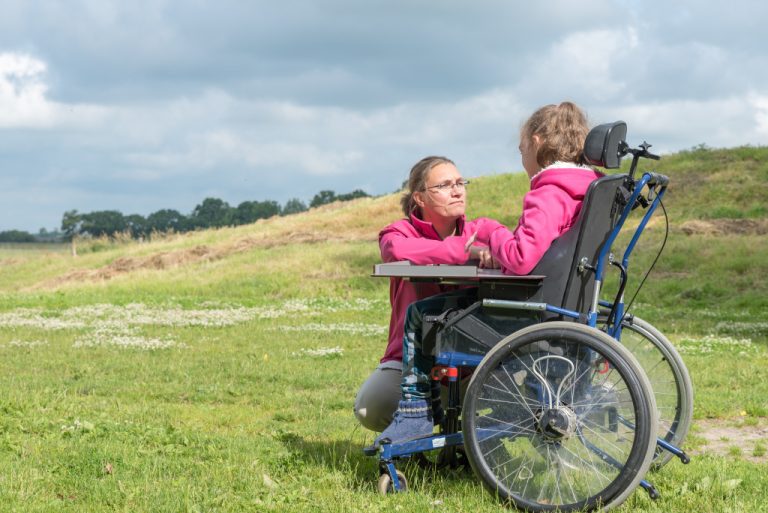There are many things that kids with disabilities cannot experience, such as talking or swimming. However, technology has come a long way in helping kids with disabilities. There are now all sorts of gadgets and devices that can help them live more normal lives. Here are some examples of technology aids for kids with disabilities and how they work.
Swimming Pool Lift
For kids with disabilities, getting into and out of a pool can be very difficult. This is unfortunate because swimming pools can provide exercise and recreation for kids with disabilities.

There are special swimming pool lifts that can help. These lifts attach to the pool deck and have a seat and a motor. The kid stays seated, and the motor lowers the seat into the water. Afterward, it lifts the chair out of the water and back to the deck. Some pool lift models include a footrest, providing additional support and stability for users.
These devices can play an essential role in ensuring that all children have equal access to swimming pools. Swimming pool lifts can provide kids with disabilities with a sense of independence and allow them to enjoy the same activities as their peers.
Swimming Aid
After being lowered into the pool, some kids with disabilities cannot keep themselves afloat. Another piece of technology enables disabled kids to swim. It consists of a harness that the kids wear and a buoyancy device to keep them afloat. The harness prevents the kids from sinking, and the buoyancy device keeps them at the water’s surface, so they can breathe.
This aid allows kids with disabilities to enjoy the water and get the exercise they need. Imagine a little girl in her tiny swimsuit, excited to swim for the first time. She can stay afloat and enjoy the water just like any other kid. She can do so because of this life-changing technology that will bring unparalleled joy.
Augmentative Alternative Communication Devices
Some kids with disabilities cannot communicate verbally. Augmentative alternative communication (AAC) devices can help them do so. These electronic devices allow kids to communicate by pressing buttons or using a joystick. Each button or symbol corresponds to a word or phrase. By pressing the controls, the kids can “speak” to others. AAC devices can be straightforward, with just a few buttons, or more complex, with hundreds of buttons and symbols.
AAC devices can help children communicate their basic needs, such as requesting food or drink. They can also be used to share more complex thoughts and ideas. AAC devices can help to build communication skills and confidence.
For children with disabilities who cannot communicate verbally, AAC devices can be essential for engaging in social interactions. These kids are often incredibly bright and have a lot to say. Still, they cannot express themselves due to their disability. AAC devices give them a voice. This opens up their world and makes their lives more complete.

Sip-and-Puff Systems
Some kids with disabilities cannot use their hands to operate a joystick or button. For them, there are sip-and-puff systems. A tube is placed in the child’s mouth, and they can control the device by sipping or puffing on the tube. This allows them to communicate without using their hands.
Sip-and-puff systems can be used to operate various devices, such as AAC devices. Computers can also be operated using sip-and-puff systems. This allows kids with disabilities to use the same devices as their peers, staying connected and participating in class.
In addition, sip-and-puff systems can be used to operate power wheelchairs. This gives kids with disabilities the ability to move around by themselves, significantly increasing their quality of life.
Access and Inclusion for Kids with Disabilities
Their inability to access many things leads to excluding kids with disabilities from various activities and experiences. This can be very isolating and lonely. Fortunately, there is now a movement to include kids with disabilities in school and extracurricular activities. This is done by making accommodations for their needs.
For example, if a child in a wheelchair wants to play soccer, the goalposts can be lowered, so he can score. Or, if a child who is deaf wants to go to a concert, he can be given a particular device that allows him to feel the music. There are many ways to include kids with disabilities, and this is something that is becoming more and more common.
As you can see, technology has come a long way in helping kids with disabilities. There are now all sorts of gadgets and devices that can help them live more enriched lives. Swimming, communicating, and being included in activities are all things that were once out of reach for kids with disabilities. But thanks to technology, they can now enjoy these things just like everyone else.

